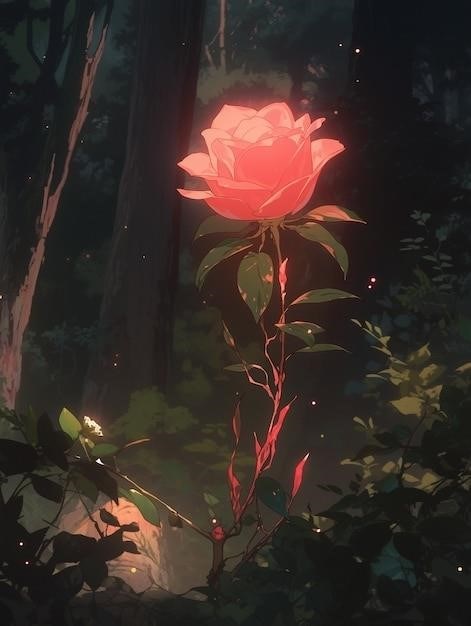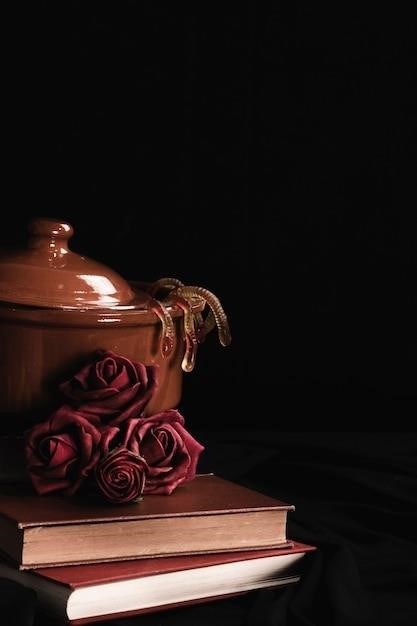
beauty and the beast screenplay pdf
Beauty and the Beast Screenplay PDF⁚ A Comprehensive Guide
This guide provides a comprehensive overview of the Beauty and the Beast screenplay, exploring its story, characters, themes, and the evolution of the story from the original fairy tale to the animated film and live-action adaptation. We will delve into the curse and enchanted rose, Belle’s journey, the Beast’s transformation, the Enchantress and her spell, Gaston’s role, and the iconic music and songs. We will also analyze the screenplays for both the 1991 animated film and the 2017 live-action adaptation, highlighting their key differences and similarities.
The Story of Beauty and the Beast
The story of Beauty and the Beast is a timeless tale of love, sacrifice, and the power of inner beauty. It follows the journey of Belle, a young woman who finds herself trapped in the enchanted castle of a cursed prince, known as the Beast. The story begins with a selfish and arrogant prince who is transformed into a hideous Beast by an enchantress as punishment for his cruelty. To break the curse, the Beast must learn to love and be loved in return before the last petal falls from an enchanted rose.
Belle, a book-loving village girl, is initially terrified of the Beast but gradually begins to see beyond his monstrous exterior. She discovers his kindness, intelligence, and loneliness, and they develop a bond of mutual respect and affection. Gaston, a handsome but vain and arrogant villager, desires Belle for himself and plots to kill the Beast and claim her for his own.
The story culminates in a dramatic climax where Gaston’s wickedness is exposed, and Belle makes a selfless decision that ultimately breaks the curse and restores the prince to his human form; Beauty and the Beast is a story about the transformative power of love, the importance of judging others based on their character rather than their appearance, and the courage it takes to embrace the unconventional and see beauty in the unexpected.
The Curse and the Enchanted Rose
The curse and the enchanted rose are central to the plot of Beauty and the Beast, serving as both a catalyst for the story and a symbol of the Beast’s transformation. The curse, imposed by an enchantress, transforms the prince into a hideous Beast as punishment for his arrogance and cruelty. The enchanted rose, a gift from the enchantress, represents the prince’s remaining time to break the spell. Each petal that falls from the rose symbolizes a day closer to the prince’s eternal doom.
The enchanted rose is a symbol of hope, reminding the Beast that he can break the curse if he learns to love and be loved in return. It serves as a constant reminder of the ticking clock, adding tension and urgency to the story. The rose also symbolizes the Beast’s inner beauty, which is slowly revealed as he opens his heart to Belle. As the Beast’s love for Belle grows, the rose’s petals begin to wilt, representing the dwindling time he has left to break the curse.
The curse and the enchanted rose are not only plot devices but also powerful metaphors for the transformative power of love. The curse represents the negative consequences of selfishness and arrogance, while the rose symbolizes the possibility of redemption and the beauty that can be found in unexpected places.
Belle’s Character and Journey
Belle, the protagonist of Beauty and the Beast, is a complex and multifaceted character whose journey of self-discovery and growth is at the heart of the story. She is intelligent, independent, and compassionate, yearning for a life beyond the confines of her provincial village. Belle’s love for reading and her thirst for adventure set her apart from the other villagers, who often find her unusual and eccentric.
Belle’s journey begins with her imprisonment in the Beast’s castle, a situation that forces her to confront her fears and prejudices. Initially, she is terrified of the Beast and repulsed by his appearance, but through their interactions, she begins to see beyond his monstrous exterior and discover his kindness and gentleness. Belle’s compassion and empathy allow her to connect with the Beast on a deeper level, challenging her own preconceived notions of beauty and worth.
Belle’s journey is a testament to the power of love and understanding to transform not only others but ourselves. She learns that true beauty lies within, and that judging someone solely based on their appearance can lead to missed opportunities and prejudice. Belle’s courage, intelligence, and unwavering belief in the good in others make her an enduring and inspiring character.

The Beast’s Transformation
The Beast’s transformation is a central theme in the Beauty and the Beast screenplay, symbolizing the power of love and redemption. Initially, the Beast is a fearsome creature, cursed by an enchantress for his arrogance and selfishness. His monstrous appearance reflects his inner turmoil and the pain he carries. However, as he interacts with Belle, a gradual change occurs.
Belle’s kindness and understanding begin to chip away at the Beast’s hardened exterior. He is moved by her compassion and her refusal to judge him based on his appearance. The Beast’s transformation is not merely physical but also emotional and spiritual. He learns the importance of empathy, humility, and the true meaning of love. He sheds his anger and resentment, allowing his gentler nature to emerge.
The Beast’s transformation is a poignant reminder that everyone, regardless of their outward appearance, has the potential for change. Through love and self-discovery, even the most hardened hearts can be softened, and the most monstrous creatures can find redemption. The Beast’s journey from isolation to acceptance underscores the transformative power of love and the importance of recognizing the inherent goodness within all beings.
The Enchantress and the Spell
The Enchantress, a powerful and enigmatic figure, plays a pivotal role in the Beauty and the Beast screenplay. She is the catalyst for the Prince’s transformation into the Beast, and her curse sets the stage for the story’s central conflict. The Enchantress’s appearance is often shrouded in mystery, and her motivations are not always clear.
Some interpretations suggest that she is a force of justice, punishing the Prince for his arrogance and cruelty. Others portray her as a vengeful spirit, seeking retribution for a past wrong. The Enchantress’s spell is a potent symbol of the consequences of unchecked pride and the power of love to break even the most formidable curses.
The Enchantress’s presence serves as a reminder that appearances can be deceiving, and that true beauty lies within. She represents the forces of change and the potential for both redemption and ruin. Her role highlights the theme of transformation, as both the Prince and the castle undergo profound changes under the influence of her spell.
Gaston’s Role in the Story
Gaston, the antagonist in the Beauty and the Beast screenplay, embodies the antithesis of the Beast’s transformation. While the Beast struggles to shed his arrogance and embrace love, Gaston is consumed by vanity, self-importance, and a desire for control. He represents the superficiality and shallowness of the village, contrasting sharply with Belle’s intelligence and independent spirit.
Gaston’s relentless pursuit of Belle is driven by a sense of entitlement and a need to possess what he cannot have. His aggression and manipulative tactics, including his attempt to frame the Beast and exploit Maurice’s vulnerability, highlight the dangers of unchecked ambition and the consequences of choosing ego over compassion.
His ultimate downfall underscores the theme of karma, as his actions lead to his own destruction. Gaston’s presence serves as a foil to the Beast’s journey of redemption, emphasizing the importance of choosing kindness and empathy over self-interest. His character provides a stark reminder that true strength lies not in physical prowess but in the capacity for love and understanding.
The Music and Songs
Music plays a pivotal role in the Beauty and the Beast screenplay, serving as a powerful narrative tool to enhance the emotional impact of the story. The film’s iconic score, composed by Alan Menken, seamlessly integrates with the lyrics written by Howard Ashman and Tim Rice, creating a harmonious blend of melody and storytelling.
The songs not only advance the plot but also reveal the characters’ inner thoughts and feelings. “Belle,” the opening number, introduces Belle’s yearning for a life beyond the confines of her village, while “Gaston” highlights his self-assured bravado and ambition. “Be Our Guest” showcases the warmth and hospitality of the enchanted castle, while “Something There” marks a turning point in Belle’s relationship with the Beast, as she begins to see beyond his outward appearance.
The film’s most iconic song, “Beauty and the Beast,” serves as a thematic cornerstone, emphasizing the power of inner beauty and the transformative nature of love. The music and songs effectively elevate the screenplay, creating a timeless and unforgettable cinematic experience that continues to resonate with audiences worldwide.
The 1991 Animated Film Screenplay
The 1991 animated film screenplay of Beauty and the Beast, written by Linda Woolverton, masterfully adapted the classic fairy tale for a modern audience, capturing its essence while adding a unique cinematic flair. The screenplay balances the traditional elements of the story, such as the cursed prince, the enchanted castle, and the transformative power of love, with a fresh and engaging narrative structure. Woolverton’s script delves deeper into the characters’ motivations and relationships, adding layers of complexity and nuance to their personalities.
The screenplay’s pacing is masterful, seamlessly weaving together moments of humor, adventure, romance, and drama. The dialogue is witty and memorable, with memorable lines that have become part of popular culture. The screenplay’s success lies in its ability to evoke both laughter and tears, capturing the hearts of audiences of all ages. The 1991 animated film screenplay of Beauty and the Beast stands as a testament to the enduring power of classic stories and the artistry of storytelling.
The 2017 Live-Action Adaptation Screenplay
The 2017 live-action adaptation screenplay of Beauty and the Beast, written by Stephen Chbosky and Evan Spiliotopoulos, takes a fresh approach to the classic tale while staying true to its core themes. The screenplay expands upon the animated film’s story, adding new dimensions to the characters and their relationships. It delves deeper into the Beast’s past, exploring the trauma that shaped his personality, and offers a more nuanced portrayal of Belle’s independent spirit and intellectual curiosity.
The screenplay skillfully integrates new musical numbers into the narrative, enhancing the emotional impact of the story and showcasing the talents of the film’s cast. While the original animated film’s iconic songs are included, the live-action adaptation adds new musical moments that complement the expanded story. The screenplay also incorporates stunning visual effects that bring the enchanted castle and its inhabitants to life in a way that surpasses the animated film. The 2017 live-action adaptation screenplay of Beauty and the Beast successfully reimagines the classic story for a contemporary audience, offering a visually spectacular and emotionally resonant experience.